Why did banks become so overexposed in the run-up to the credit crunch? A risk manager at a large global bank–someone whose job it was to make sure that the firm did not take unnecessary risks — explains in his own words
IN JANUARY 2007 the world looked almost riskless. At the beginning of that year I gathered my team for an off-site meeting to identify our top five risks for the coming 12 months. We were paid to think about the downsides but it was hard to see where the problems would come from. Four years of falling credit spreads, low interest rates, virtually no defaults in our loan portfolio and historically low volatility levels: it was the most benign risk environment we had seen in 20 years.
As risk managers we were responsible for approving credit requests and transactions submitted to us by the bankers and traders in the front-line. We also monitored and reported the level of risk across the bank’s portfolio and set limits for overall credit and market-risk positions.
Category: Business
Big Box Retail 2008: Costco Arrives in (Madison) Middleton
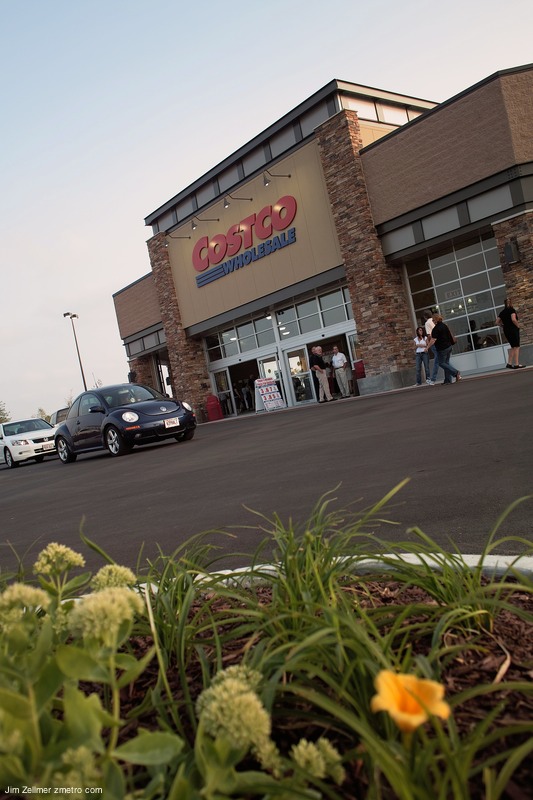

Costco held a very well attended party this evening celebrating the opening of their new Middleton warehouse club [Map].
I did not see a stand to purchase law degrees.
Middleton provided a TIF (Tax Incremental Financing) agreement to the site developer. A related Isthmus article can be found here.
A few additional photos:
 |
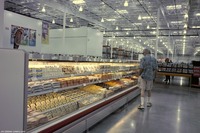 |
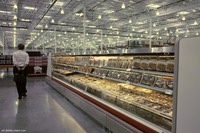 |
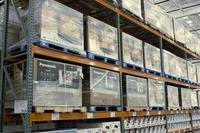 |
 |
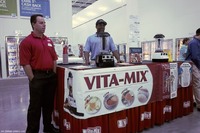 |
Clusty search: Costco.
Air Travel: 2008 – A Time When Standing Still Dominates
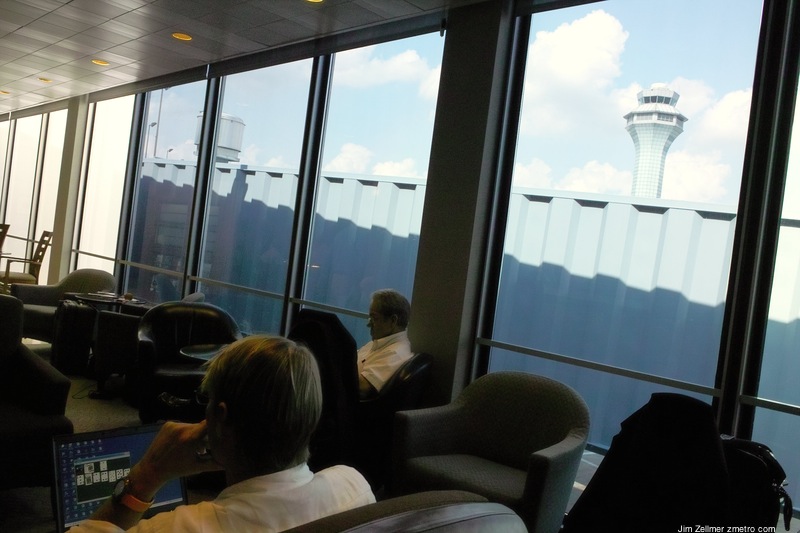
This is one of those moments when a camera in hand meets a scene waiting to be photographed: a beleaguered traveller resorting to solitaire on his PC while waiting for the promised next flight. The blue sky ignores the chaos below. Air travel is certainly, as a fellow passenger lamented, “not what it once was”.
Nassim Nicholas Taleb: the prophet of boom and doom
“You have to worry about things you can do something about. I worry about people not being there and I want to make them aware.” We should be mistrustful of knowledge. It is bad for us. Give a bookie 10 pieces of information about a race and he’ll pick his horses. Give him 50 and his picks will be no better, but he will, fatally, be more confident.
We should be ecologically conservative – global warming may or may not be happening but why pollute the planet? – and probablistically conservative. The latter, however, has its limits. Nobody, not even Taleb, can live the sceptical life all the time – “It’s an art, it’s hard work.” So he doesn’t worry about crossing the road and doesn’t lock his front door – “I can’t start getting paranoid about that stuff.” His wife locks it, however.
He believes in aristocratic – though not, he insists, elitist – values: elegance of manner and mind, grace under pressure, which is why you must shave before being executed. He believes in the Mediterranean way of talking and listening. One piece of advice he gives everybody is: go to lots of parties and listen, you might learn something by exposing yourself to black swans.
I ask him what he thinks are the primary human virtues, and eventually he comes up with magnanimity – punish your enemies but don’t bear grudges; compassion – fairness always trumps efficiency; courage – very few people have this; and tenacity – tinker until it works for you.
TDS Telecom sues Monticello over city’s plan to build its own high-speed network
A failure to communicate between Monticello and TDS Telecom, its chief phone and cable provider, is threatening to short-circuit plans to make the city one of the most wired communities in the nation.
Both Monticello and TDS Telecom are constructing multi-million dollar fiber-optic networks that will directly connect to every home, office and business in the city.
When the networks come online in the next year or so, they would be among only about 45 in the country that provide such connectivity.
But Monticello — a city of about 11,000 in northern Wright County — also may be the only locale where the public and private sectors are competing so directly for paying customers.
The acrimony from such direct competition has led to the filing of what may become a precedent-setting lawsuit by TDS questioning whether municipalities can use revenue bonds to create fiber-optic networks.
Fascinating. It’s not like TDS is building fiber to the home here. We’re stuck with (and continue to pay for) nearly century old copper networks. Much like roads, I believe that public fiber networks (open to any player) make sense, particularly when there is no evidence that the incumbent telcos plan to upgrade their infrastructure.
Flight’s 100 Greatest
It is always a slightly nerve-racking moment for an editor to commission a reader’s poll. Quite simply, what happens if so few people participate that the exercise becomes a farce?
It very quickly became apparent that no such ignominy awaited the 100 Greatest exercise marking Flightglobal.com’s print edition, Flight International’s centenary. Votes poured in for your choices in the fields of most influential Civil Aircraft, Military Aircraft, Person, Engine and Moment.
By the time the poll closed on 20 June, no fewer than 18,000 of you had voted – thank you for having taken the trouble to do so and making this a more than worthwhile exercise.
Space is always limited in any publication, so the temptation to write mini-articles on every entry in our list had to be resisted. To those of you whose favourite personality or piece of machinery does not receive the words you feel he, she or it derived, our apologies.
#1: Apollo 11 Moon Landing
#2: Boeing 747
#3: The Wright Brothers
Southwest Flies Past High Oil Prices
BOB MOON: We’re seeing the results of all this financial turbulence in the not-so-friendly skies lately. Both American and United have announced they’re cutting flights domestically and internationally.
Across the industry, companies are trying to nickel and dime their way to profitability, hitting consumers with fuel surcharges or extra fees for baggage, but one carrier has managed to navigate a relatively smooth flight path.
Marketplace’s Jeff Tyler looks at how Southwest has steered clear of trouble.
Perhaps one day, Madison will be fortunate to enjoy Southwest service.
Verizon’s fiber guru talks strategy
Fios also has helped future-proof Verizon’s network. While its cable competitors buckle under the pressure of peer-to-peer traffic on their networks, Verizon has enough capacity in its network, thanks to its fiber upgrades, to weather the storm unscathed and work on its own timetable to find more efficient ways to handle peer-to-peer traffic.
Mark Wegleitner, Verizon’s senior vice president of technology in charge of broadband and consumer services, has helped develop and drive Verizon’s fiber strategy. I sat down with him at the Nxtcomm trade show in Las Vegas last week to talk about a wide variety of topics, including the controversy over Comcast’s treatment of BitTorrent traffic, faster speeds for Fios, and what the company plans to do next when it reaches its 2010 goal of passing 18 million homes with fiber.
The Madison area is stuck with an aging telco infrastructure. Neither AT&T, nor TDS have any plans to upgrade their networks to the home. Not good…. Verizon FIOS Deployment Map.
Midwest Airlines Employees – Between A Rock And A Hard Place
I had to sigh when I read this article in the Milwaukee Journal-Sentinel on the draconian pay cuts Midwest Airlines is asking its employees to take in order to survive. Having worked at two airlines during turbulent times, I too faced the decision on what to do when management imposed pay cuts.
In the first case, I took a temporary cut at Mesa Air Group after the horror of 9/11, when airlines didn’t know how long it would take to recover from the week-long shutdown of the air system and travelers deciding to fly again. The second time found me swallowing hard as I took a pay cut at Delta Air Lines after the carrier filed for Ch. 11.
But these cuts were nothing compared to what Midwest is asking of its employees — pay cuts of up to 65% for union pilots and flight attendants to avoid filing for bankruptcy. And this is on top of grounding its MD80s — almost half the fleet — and laying off hundreds of workers.
I suspect the days of Midwest’s extraordinary service are over.
Cisco TelePresence Coming to a Living Room Near You
co Systems (NSDQ:CSCO) is set to deliver its TelePresence high-definition videoconferencing technology to the home market within the next 12 months, said the company’s top executive this week.
The technology will be available via the channel, including via retailers the likes of Best Buy (NYSE:BBY) and Wal-Mart and service providers such as AT&T (NYSE:T), said Cisco Chairman and CEO John Chambers at the Cisco Live conference in Orlando, Fla.
“It will probably evolve. At first we’ll do it … where we’re very careful on how the channel sells TelePresence and very careful that the rooms are set up right and the cameras are set up right,” Chambers said. “Having said that, I think that you will see a combination of distribution points.”
Chambers expects pricing of Cisco’s home-use TelePresence units to come in below $10,000 depending on what functionality the user wants.
Promising, particularly as the air travel experience continues to deteriorate.